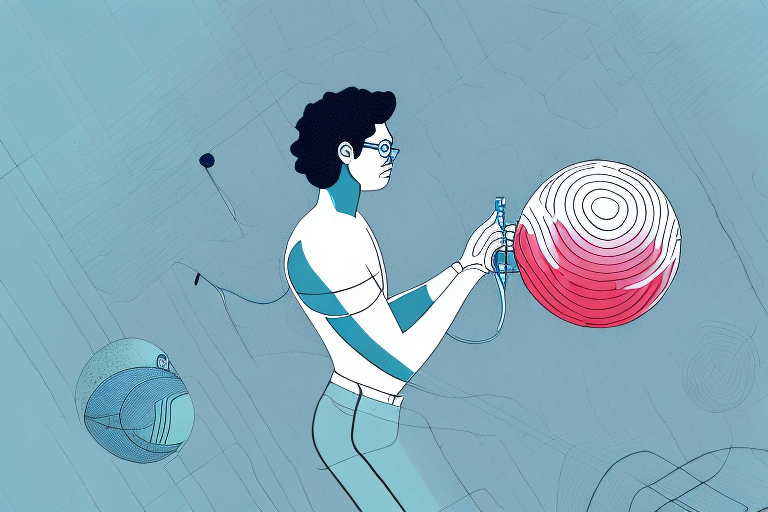Do you often experience tightness or discomfort in your calf muscles, especially after a long day of standing or physical activity? If so, you’re not alone. The calf muscles play a pivotal role in various movements of the body, such as walking and running, which is why it’s essential to keep them healthy and flexible. In this article, we’ll explore how to use trigger point work and a ball to target your calf muscles effectively. You’ll learn about the benefits, the steps to follow, safety precautions, best practices, and alternative techniques. Let’s dive in!
Understanding the Importance of Calf Muscles for Overall Body Movement
Before we get into the specifics of trigger point work and ball rolling, let’s get a better understanding of why calf muscles are essential for overall body movement. Calf muscles consist of two primary muscles, the gastrocnemius and the soleus, located at the back of your lower leg. They help to flex your foot, point your toes downward, and push off the ground with force when walking, running, or jumping. When the calf muscles are tight or strained, it can lead to a limited range of motion and affect your gait, balance, and posture.
What are Trigger Points and How Do They Affect Your Calf Muscles?
Trigger points are areas of hyperirritability within a muscle that can cause pain or discomfort. They can develop due to overuse, injury, or poor posture. In the case of the calf muscles, trigger points can cause referred pain, which means pain is felt in another area of the body. For example, a trigger point in the soleus muscle can refer pain to the heel or ankle. Trigger points can also cause stiffness and reduced flexibility in the affected muscle, leading to a cascade of issues throughout the body.
The Benefits of Using a Ball to Target Your Calf Muscles
Using a ball, such as a tennis ball or foam roller, to roll out your calf muscles can provide numerous benefits. First, it helps to release trigger points and knots by applying pressure to the affected area. This, in turn, can improve blood flow, reduce inflammation, and increase mobility. Additionally, ball rolling can stimulate the nervous system, leading to a relaxing effect on the entire body. Lastly, the process of rolling out your calf muscles can be an effective self-massage technique, which can help reduce stress and promote a sense of well-being.
Step-by-Step Guide on Using Trigger Point Work and a Ball to Release Tension in Your Calf Muscles
To effectively release tension in your calf muscles, follow these simple steps:
- Place the ball under the calf muscle you wish to work on.
- Using your body weight, slowly roll the ball up and down the muscle, stopping at any tender points.
- Hold the ball on the tender point for 10-20 seconds, or until you feel the tension release.
- Repeat on any other areas of the calf muscle where you feel tension or discomfort.
It’s essential to breathe deeply and relax your body throughout the process. You may also want to adjust the pressure by changing the position of the ball or using a softer or firmer ball.
Safety Precautions to Keep in Mind When Performing Trigger Point Work on Your Calf Muscles
Although trigger point work and ball rolling can be incredibly beneficial, it’s essential to take safety precautions to avoid injury. Here are a few safety tips to keep in mind:
- If you’re experiencing severe pain or discomfort, consult your doctor or physical therapist before attempting trigger point work or ball rolling.
- Start slowly and gradually increase pressure and duration over time.
- Avoid rolling over bony areas or joints, as this can cause discomfort or injury.
- If you have a previous injury, such as a strain or tear, work with your healthcare provider to determine if trigger point work is appropriate.
Best Practices for Incorporating Trigger Point Work and Ball Rolling into Your Fitness Routine
To get the most out of trigger point work and ball rolling for your calf muscles, it’s best to incorporate them into your fitness routine. Here are some best practices to follow:
- Roll out your calf muscles before and after exercise to prevent injury and encourage recovery.
- Include trigger point work and ball rolling in your warm-up and cool-down routines.
- Experiment with different types of balls, such as foam rollers, therapy balls, or lacrosse balls, to find what works best for you.
- Be consistent and make it a habit to roll out your calf muscles regularly.
Common Mistakes to Avoid When Targeting Your Calf Muscles with a Ball and Trigger Point Work
As with any exercise or therapy, there are common mistakes to avoid when targeting your calf muscles with a ball and trigger point work. Here are some mistakes to watch out for:
- Applying too much pressure, too quickly, can lead to injury or discomfort.
- Rolling out your calf muscles without proper warm-up or cool-down can increase the risk of muscle strain or injury.
- Neglecting to adjust the pressure or position of the ball may make the process uncomfortable or ineffective.
- Relying solely on ball rolling may not be enough to address more severe or chronic issues.
How Often Should You Perform Trigger Point Work on Your Calf Muscles?
The frequency of trigger point work on your calf muscles depends on your individual needs and goals. However, most experts recommend rolling out your calves one to three times a week, depending on the intensity of your workout routine. If you’re experiencing severe tension or discomfort, you may want to roll out your calves more frequently, as long as it doesn’t cause further injury or strain.
Alternative Techniques for Targeting Your Calf Muscles Without a Ball or Trigger Point Work
While trigger point work and ball rolling can be incredibly beneficial for calf muscles, there are other techniques you can incorporate into your fitness routine. Here are some alternative techniques to consider:
- Stretching and mobility exercises that focus on calf muscles, such as standing calf raises and ankle rotations.
- Massage therapy, which can be an effective way to release tension and improve circulation in your calf muscles.
- Acupuncture or dry needling, which can stimulate blood flow and reduce pain associated with trigger points.
Conclusion
In conclusion, trigger point work and ball rolling can be effective ways to target your calf muscles, release tension, and promote flexibility. It’s essential to take safety precautions, be consistent, and incorporate these techniques into your fitness routine to enjoy the full benefits. However, if you have a pre-existing injury or severe pain, consult your doctor or physical therapist before attempting trigger point work. Lastly, consider alternative techniques if trigger point work and ball rolling aren’t the right fit for you.





